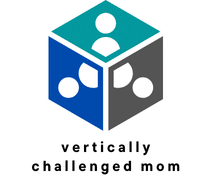Unlocking success with a digital product design studio
In today’s fast-paced market, the role of a digital product design studio extends beyond aesthetics. These studios foster innovation, drive user-centric approaches, and significantly impact business success. Investing in professional design not only enhances user experience but also contributes to long-term growth. Discover how leveraging design expertise can unlock unparalleled opportunities for your digital products. Explore actionable strategies, key principles, and compelling case studies for a competitive edge.
The Role of Digital Product Design Studios in Business Success
Digital product design studios play a pivotal role in shaping successful digital products by focusing on user-centric design methods. These studios, like in https://realistack.com/ , emphasize understanding the holistic sensations and emotions users experience, ensuring that digital products are not only functional but also engaging. This approach is crucial as it helps businesses avoid common pitfalls and enhances user satisfaction.
Cela peut vous intéresser : Transform your content with audio transcription and subtitle generation
Investing in professional design services offers numerous benefits. By employing user-centered design strategies, studios can create memorable web experiences that boost customer loyalty and engagement. This is achieved through practices such as A/B testing and employing personas, which help tailor products to meet user needs effectively. Furthermore, enhancing user experience through responsive design, fluid grids, and flexible images ensures adaptability across various devices, catering to the ever-evolving digital landscape.
The long-term business growth stemming from such investments is significant. Well-researched designs prevent costly mistakes during the product development lifecycle, ultimately saving time and resources. By systematically collecting and analyzing user feedback, companies can set clear goals and select suitable research methods for effective UX evaluation. This structured approach not only maximizes return on investment but also positions businesses for sustained success in the competitive digital market.
Lire également : Grow your hacking and pentesting knowledge with top courses
Key Design Principles and Strategies
Innovative Design Strategies for Competitive Advantage
Innovative design strategies are essential for businesses aiming to gain a competitive edge. By integrating cutting-edge techniques, companies can craft digital products that stand out in the market. These strategies often involve leveraging design thinking principles, which focus on understanding user needs and iterating solutions based on feedback. This user-centric approach ensures products are both functional and appealing, meeting the evolving demands of consumers.
Importance of Design Thinking in Product Development
Design thinking plays a critical role in product development by fostering creativity and innovation. This methodology encourages teams to empathize with users, define problems clearly, ideate solutions, prototype, and test iteratively. It helps in addressing complex challenges with a structured approach, making it a valuable tool for digital product design studios aiming to deliver impactful products.
Agile Methodologies for Responsive Design Processes
Implementing agile design methodologies allows for a more responsive and flexible design process. Agile emphasizes collaboration, adaptability, and continuous improvement, enabling teams to respond quickly to changes and user feedback. This approach not only enhances the user experience but also ensures that products remain relevant and competitive in a rapidly changing digital landscape. By adopting agile practices, studios can streamline their workflows and improve project outcomes.
Showcasing Success and Learning Opportunities
Case Studies of Successful Digital Products
Examining successful digital products provides invaluable insights into effective design strategies. For instance, companies that have embraced user-centric methodologies often see higher engagement and customer satisfaction. By focusing on the user experience (UX) fundamentals, businesses can craft products that resonate with their audience. Detailed case studies highlight how integrating user feedback and iterative testing can lead to significant improvements in product functionality and appeal.
Learning from Market Research in Product Development
Market research is a cornerstone of effective digital product strategy. It informs design decisions by providing a deep understanding of consumer needs and preferences. Through comprehensive research, businesses can anticipate market trends and adapt their strategies accordingly. This proactive approach not only aids in aligning products with consumer expectations but also reduces the risk of costly design errors. Insights from research guide the development process, ensuring products are both innovative and user-friendly.
Best Practices for Balancing Aesthetics and Functionality in Design
Balancing aesthetics and functionality is crucial for creating compelling digital products. A well-designed interface should be visually appealing while maintaining ease of use. Employing best practices such as intuitive navigation, consistent design elements, and clear visual hierarchy can enhance user satisfaction. By prioritizing both form and function, designers can deliver products that are not only beautiful but also efficient, thereby fostering a seamless user experience.
